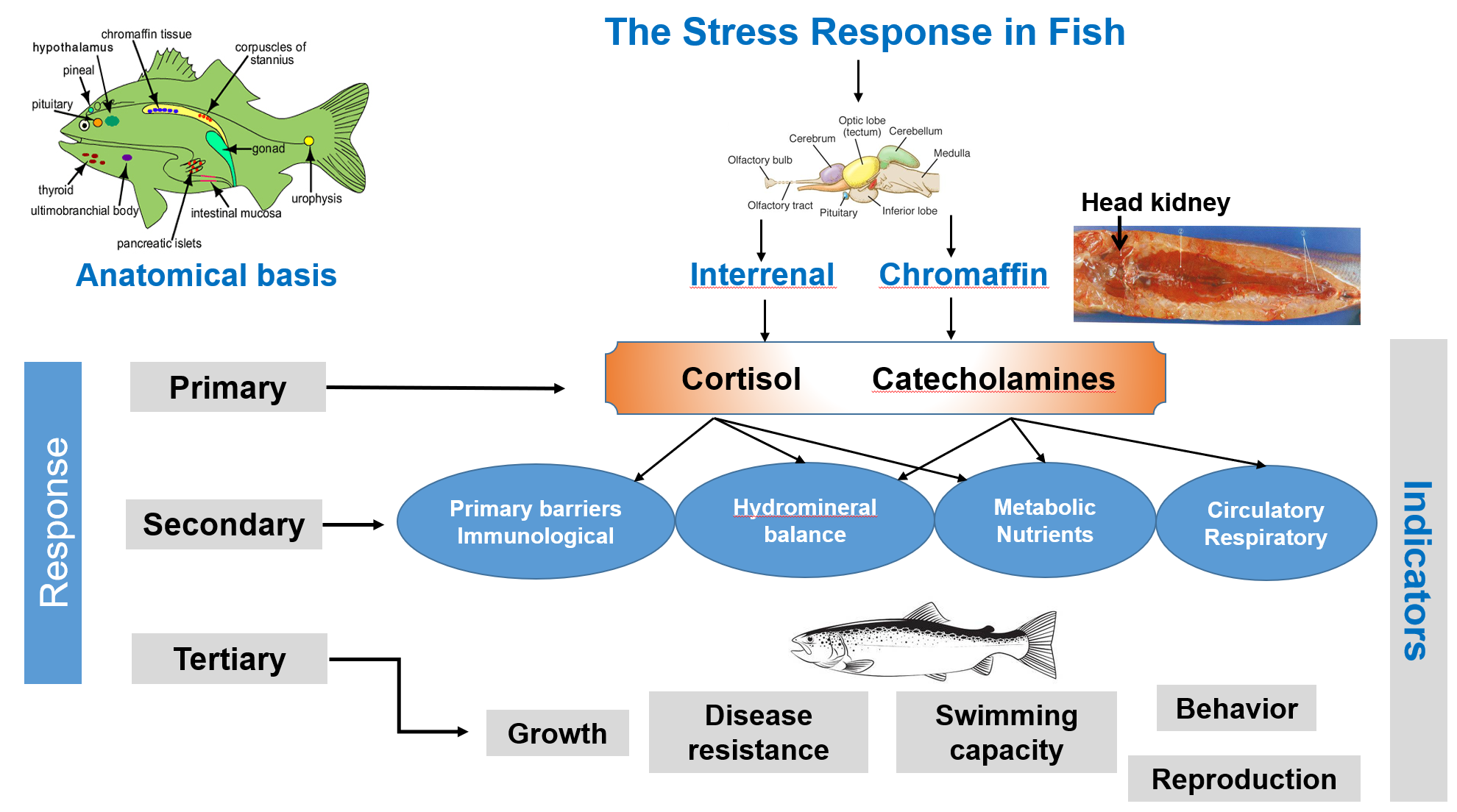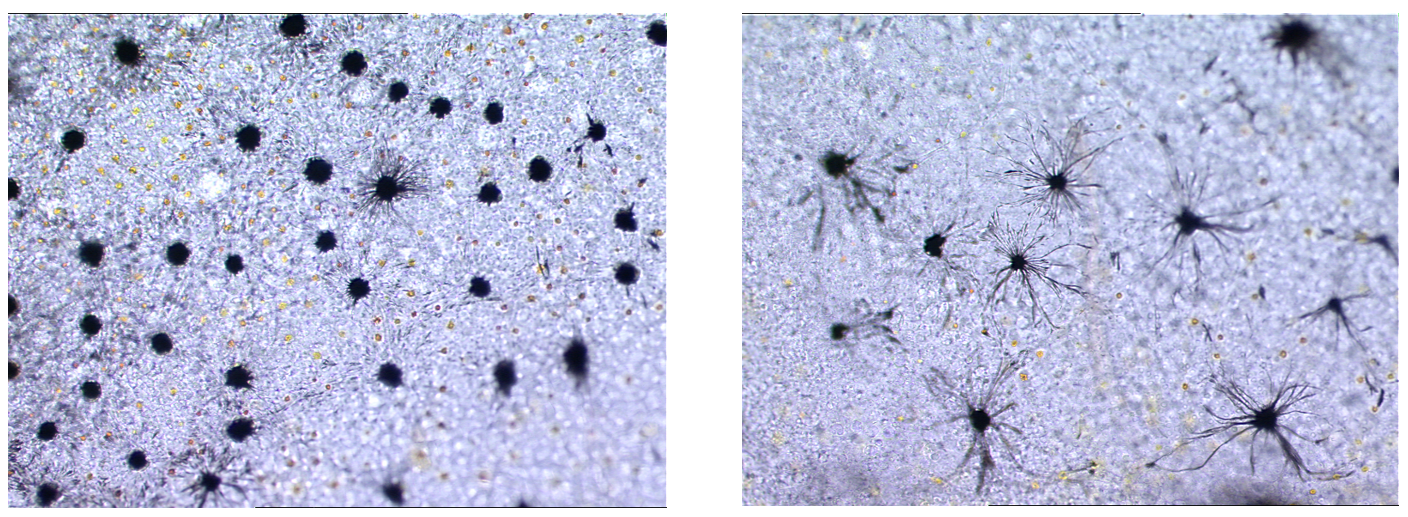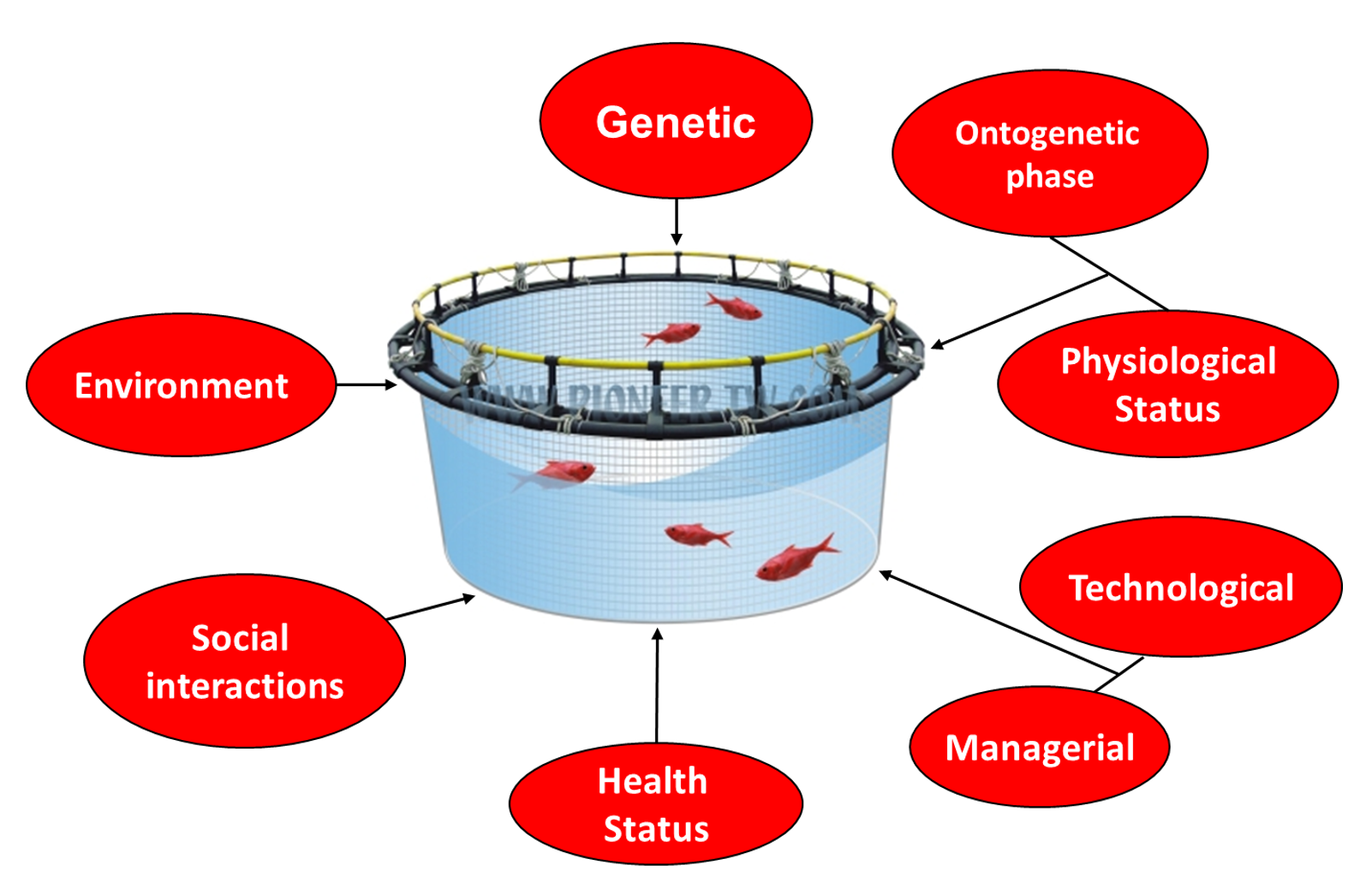Research Interests

The Physiology of Stress in Fish
Following exposure to a stressor(s), fish undergo a series of neuroendocrine, metabolic and behavioural changes to cope successfully with the challenge. The fish’s response to stressors may be of either an adaptive nature, allowing for homeostatic recovery, or a maladaptive nature having adverse effects on survival, growth, immune response, reproductive capabilities, behaviour and general fitness. Although most fish follow a generalized motif of stress response, with increased blood concentrations of cortisol, glucose and lactate, there is species-specificity and individual plasticity in the pattern and magnitude of the response, as well as in stress tolerance. We focus on the characterization of the stress response in several aquaculture marine fish species and the model organism zebrafish.
Main questions are:
- How coping styles (behavioural syndromes) are linked with stress response, metabolism, and important performance traits?
- How early life programming affects the stress response and fish robustness at subsequent phases of development?
- How glucocorticoid (GR) and mineralocorticoid (MR) receptors mediate the coordination of the physiological and behavioral responses to chronic stress in knock-out zebrafish.

Pigmentation Physiology
Fishes display a variety of skin coloration patterns which are of great ecological, physiological and behavioural importance. Skin pigmentation pattern can be also considered as an index of animal welfare in aquaculture species and a factor of economical consideration. Several fish, such as the red sea bream (Pagrus major) and the red porgy (Pagrus pagrus), that are coloured in nature acquire darker coloration under intensive rearing conditions. We focus on the identification of the factors that contribute to skin dispigmentation and the means to overcome this problem.
– How environmental (light intensity, lighting spectrum, water temperature, salinity, nutrition) and husbandry factors (tank colour, stocking density, sea cage’s depth, handling) affect skin pigmentation in the red porgy?
– How the endocrine system (cortisol, α-MSH, thyroid hormones, catecholamines) regulate physiological and morphological colour changes in Mediterranean marine fish?

Fish Welfare
Fish reared under intensive culture conditions are subjected to several environmental, social, and husbandry related stimuli that may cause chronic stress and impair their welfare status. Welfare research in our lab is focusing on the:
- Characterisation of the welfare needs of marine fish species, at different phases of the life-cycle in captivity (larvae, juveniles, on-growing and sexually mature fish), production phases (hatchery, weaning, on-growing in sea cages) and critical husbandry operations (sorting, transportation, harvest and slaughter).
- Development of non-invasive chronic stress indicators.
- Development of species-specific reliable and easy-to-use operational welfare indicators/scoring systems.
